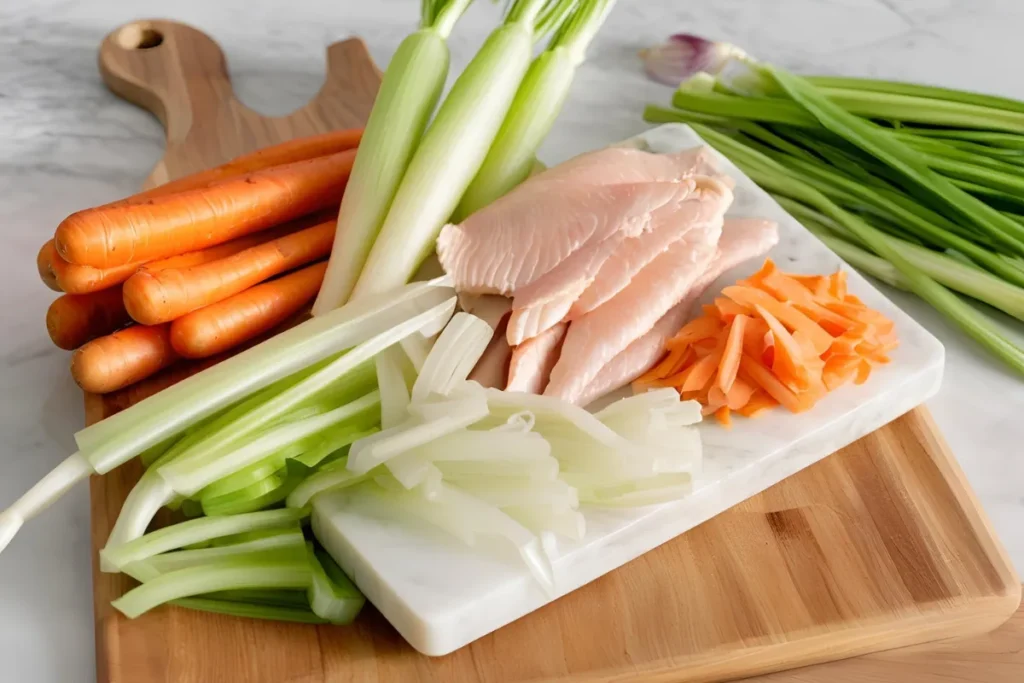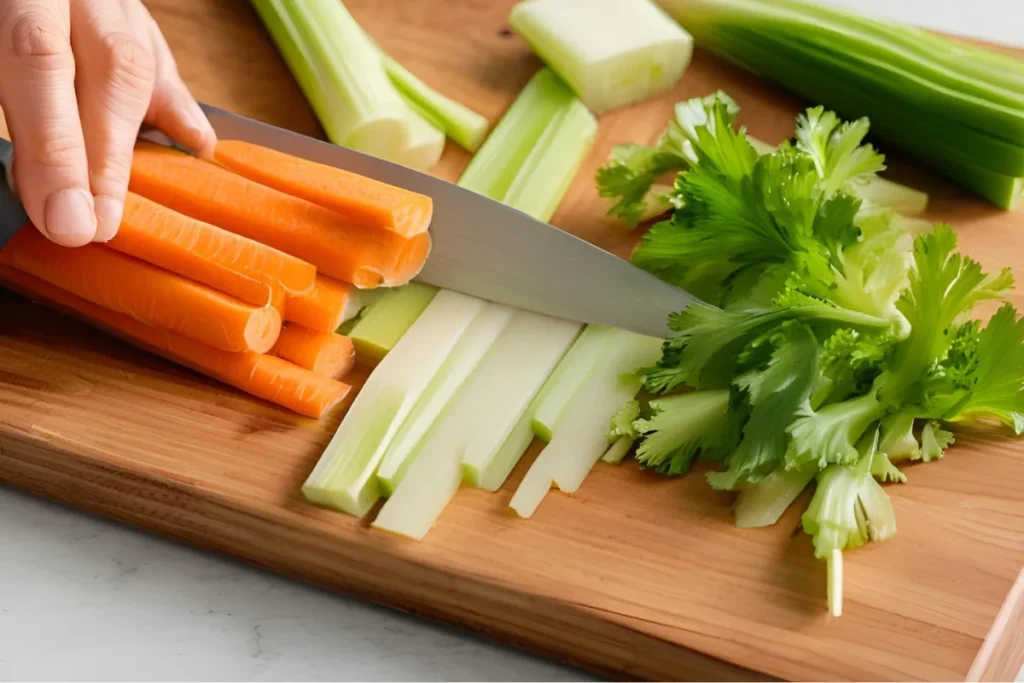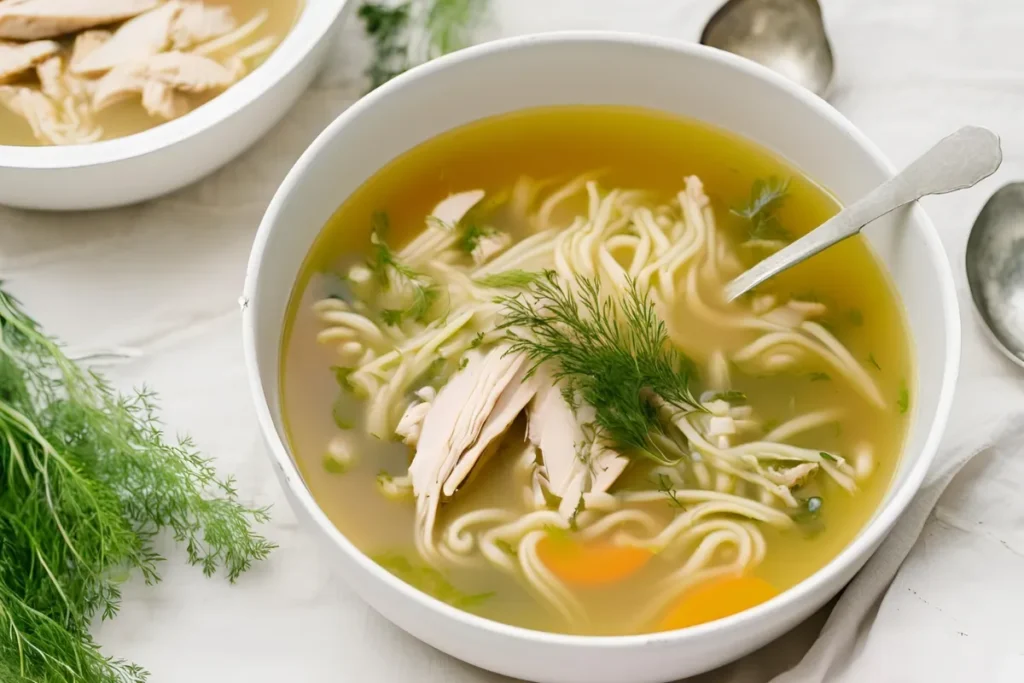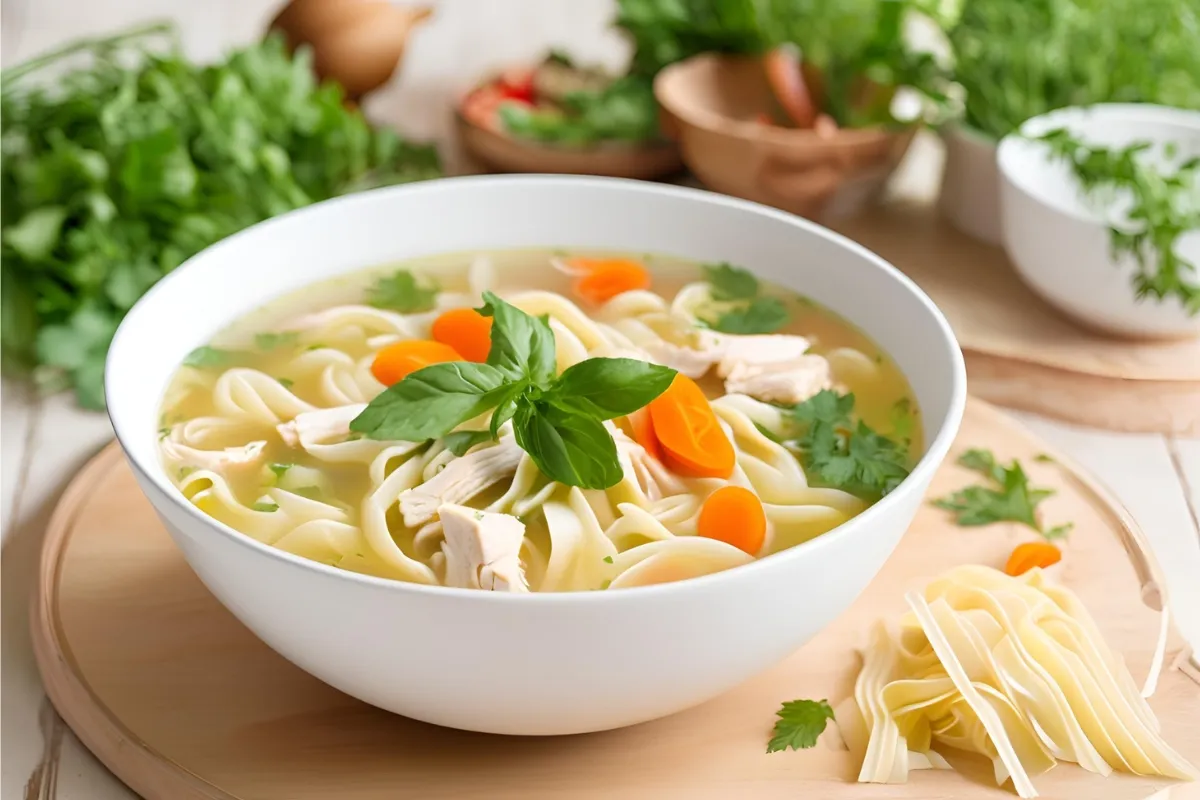When the weather turns chilly or you just need a pick-me-up, there’s nothing quite like a homemade chicken noodle soup recipe. It’s a classic dish that feels like a hug in a bowl—hearty, wholesome, and downright comforting. Whether you’re battling a cold or simply craving something nostalgic, this easy recipe delivers the perfect balance of flavor and warmth.
Why Chicken Noodle Soup Is a Beloved Comfort Food

First off, let’s talk about comfort. There’s just something magical about the combination of tender chicken, flavorful broth, and perfectly cooked noodles. It’s a dish that crosses generations, bringing back memories of cozy dinners and care packages when you were sick. But it’s not just nostalgia. Chicken noodle soup is scientifically proven to have soothing properties—warm broth helps clear congestion, and the nutrients packed into each spoonful can give your body a much-needed boost.
Moreover, this dish is highly customizable. You can make it as simple or elaborate as you like, adding your favorite veggies or switching up the seasonings. No matter how you make it, chicken noodle soup is one of those meals that feels like home.
Who Can Benefit From Making Chicken Noodle Soup?
While chicken noodle soup is universally adored, certain groups of people might find it particularly appealing.
Beginners in the Kitchen
If you’re new to cooking, chicken noodle soup is a fantastic recipe to start with. It’s forgiving, easy to follow, and doesn’t require fancy equipment. Plus, the ingredients are simple and easy to find—perfect for anyone building confidence in the kitchen.
Even if you’re prone to making the occasional cooking mistake, chicken noodle soup allows you to fix things along the way. For example, if the broth is too salty, you can add water. If you overcook the noodles, they can be swapped for fresh ones. It’s a learning experience disguised as a delicious meal.
Families Looking for Nutritious Meals
Let’s face it—getting kids (or picky adults!) to eat something healthy can be tricky. But chicken noodle soup manages to strike a balance between nutritious and comforting. With protein from the chicken, fiber from the veggies, and carbs from the noodles, it’s a well-rounded meal that’s satisfying and good for you.
For busy parents, this recipe is a lifesaver. You can make a big batch and reheat it throughout the week for quick lunches or dinners. Plus, you can sneak in extra vegetables like spinach, kale, or peas without anyone batting an eye.
Why This Recipe Stands Out
What sets this particular chicken noodle soup recipe apart is its attention to flavor and simplicity. We’re not just tossing everything into a pot and calling it a day. Instead, we’ll show you how to build a broth that’s rich and flavorful, perfectly season the chicken, and select the ideal noodles for that just-right texture.
This recipe is also super versatile. Need a gluten-free version? No problem. Want to add a spicy kick? Go for it. It’s a base recipe that you can tweak to suit your tastes, making it a must-have in your cooking repertoire.
A Brief History of Chicken Noodle Soup
Chicken noodle soup may seem like a straightforward dish, but it actually has a fascinating history. This comforting meal has been around for centuries, evolving into the variations we enjoy today.
The Origins of Chicken Soup as a Remedy
Did you know that chicken soup has been used as a remedy for colds and other ailments for thousands of years? It dates back to ancient times, with records of it appearing in traditional Chinese medicine and ancient Egyptian texts. Fun fact: In the 12th century, a Jewish physician named Maimonides even recommended chicken soup as a cure for respiratory illnesses.
But why is chicken soup so effective? Scientists believe it’s not just an old wives’ tale. The warm broth helps hydrate the body and loosen mucus, while the nutrients from the chicken and vegetables support the immune system. So, when your mom insisted on chicken soup when you were sick, she was onto something!
Cultural Variations of Chicken Noodle Soup
Chicken noodle soup isn’t just an American classic—it’s a global phenomenon. Different cultures have put their own spin on the dish, using local ingredients and flavors to make it their own.
- In Japan, you’ll find chicken ramen, a savory soup made with a rich soy-based broth and chewy noodles.
- In Mexico, sopa de fideos features thin noodles in a tomato-based chicken broth, often spiced up with chili peppers.
- In Italy, chicken soup might be served with tortellini instead of noodles, making it a heartier meal.
- In the Philippines, chicken sotanghon soup uses glass noodles and is flavored with garlic, ginger, and annatto for a unique twist.
Each variation highlights how adaptable chicken soup is, proving that it’s a dish with universal appeal.
Understanding the Basics of a Chicken Noodle Soup Recipe
A great chicken noodle soup recipe doesn’t happen by accident—it’s all about balancing the right ingredients and techniques to create a dish that’s flavorful, hearty, and satisfying. Whether you’re a seasoned cook or just starting out, understanding the core components of this dish will make all the difference.
Key Ingredients for Flavorful Chicken Noodle Soup
The secret to an unforgettable chicken noodle soup lies in its ingredients. Each component plays a crucial role in building flavor and texture.
Choosing the Right Chicken (Whole Chicken, Breasts, or Thighs)
The type of chicken you use can dramatically change the taste and feel of your soup. Whole chicken is a classic choice, as it creates a rich, gelatinous broth packed with flavor. Chicken thighs, on the other hand, are ideal for their tenderness and fat content, which adds depth to the soup.
If you prefer leaner meat, chicken breasts are a good option. However, they can dry out if overcooked, so it’s best to add them later in the cooking process or shred them once fully cooked. For maximum convenience, some people even use pre-cooked rotisserie chicken, which can save time without sacrificing flavor.
The Role of Fresh Vegetables in the Recipe
Vegetables are the heart of any chicken noodle soup. A classic mirepoix—carrots, celery, and onions—is the foundation, providing a subtle sweetness and aromatic base. Adding other veggies like parsnips, leeks, or even zucchini can elevate the soup’s flavor profile and nutritional value.
It’s essential to use fresh, high-quality vegetables to ensure the soup tastes vibrant. Frozen or canned veggies can work in a pinch, but they may lack the crispness and brightness that fresh produce brings to the table.
Types of Noodles That Work Best
When it comes to noodles, there are plenty of options to choose from. Egg noodles are the traditional choice, offering a chewy texture that holds up well in broth. However, other types of pasta, like rotini, ditalini, or even orzo, can work just as well.
If you’re looking for a gluten-free alternative, rice noodles or zucchini noodles (zoodles) are great options. It’s important to cook the noodles separately from the soup and add them just before serving to avoid them getting too soggy.
The Broth: The Heart of the Recipe
A good broth can make or break your chicken noodle soup. It’s the backbone of the dish, tying all the ingredients together.
Homemade vs. Store-Bought Broth
Homemade broth is hands-down the best option if you want maximum flavor and control over the ingredients. It’s surprisingly easy to make—all you need are chicken bones, water, and a few aromatics like garlic, bay leaves, and peppercorns.
Store-bought broth, however, can be a lifesaver when you’re short on time. Just make sure to choose a low-sodium variety so you can adjust the seasoning to your taste. Adding fresh herbs or a splash of apple cider vinegar can enhance the flavor of store-bought broth, making it taste closer to homemade.
Tips for Adding Depth to the Broth
If you want a broth that’s rich and full-bodied, simmering is key. Letting the broth cook low and slow allows the flavors to meld together beautifully.
For an extra boost of flavor, consider roasting the chicken bones or vegetables before adding them to the pot. Adding umami-rich ingredients like soy sauce, miso, or a Parmesan rind can also create a more complex flavor profile.
Essential Cooking Techniques for Chicken Noodle Soup
Perfecting chicken noodle soup isn’t just about the ingredients—it’s also about how you cook them.
Simmering for Optimal Flavor
To get the most out of your ingredients, simmer the soup gently rather than boiling it. High heat can cause the chicken to toughen and the vegetables to break down too quickly, resulting in a less-than-ideal texture.
Timing the Addition of Ingredients
Timing is everything when it comes to chicken noodle soup. Add ingredients like onions and carrots early on to build flavor, but save delicate veggies like spinach or zucchini for the final minutes of cooking. Similarly, cook the chicken until it’s tender but not overdone, then shred it and return it to the pot just before serving.
The Health Benefits of Chicken Noodle Soup
Chicken noodle soup isn’t just delicious—it’s also incredibly good for you.
Nutritional Value of Ingredients
Each component of chicken noodle soup contributes to its nutritional profile. Chicken provides high-quality protein, which is essential for muscle repair and immune function. Vegetables like carrots and celery are packed with vitamins and antioxidants, while noodles offer a quick source of energy.
If you’re watching your calorie intake, you can easily adapt the recipe by using whole-grain noodles, reducing the amount of salt, or adding more vegetables.
Immune-Boosting Properties of Chicken Soup
Chicken soup has long been touted as a remedy for colds, and for good reason. Studies have shown that the warm broth can help clear nasal congestion and soothe sore throats. Meanwhile, the ingredients—like garlic, ginger, and chicken—contain compounds that may help strengthen the immune system.
Adding herbs like thyme or turmeric can provide additional health benefits, as these ingredients are known for their anti-inflammatory properties. So, the next time you’re feeling under the weather, reach for a bowl of chicken noodle soup—it’s basically medicine in disguise.
How to Make Chicken Noodle Soup at Home
If you’ve ever wondered how to create a cozy bowl of chicken noodle soup that hits all the right notes—comforting, flavorful, and satisfying—you’re in the right place. Whether you’re recreating childhood memories or testing out new variations, this section will guide you through the process step by step.
Step-by-Step Guide to an Easy Chicken Noodle Soup Recipe
Creating a delicious chicken noodle soup doesn’t have to be intimidating. With a few simple steps, you’ll have a hearty dish that’s perfect for any occasion.
Preparing the Ingredients

The key to a seamless cooking experience is prepping everything in advance. Here’s what you’ll need:
- Chicken: About 1–2 lbs of chicken thighs or breasts.
- Vegetables: A mix of diced carrots, celery, and onions (the holy trinity of soup-making).
- Broth: 8 cups of homemade or store-bought chicken broth.
- Noodles: Egg noodles are classic, but feel free to substitute.
- Seasonings: Garlic, bay leaves, thyme, salt, and pepper.
- Optional Additions: Fresh parsley, lemon juice, or even a dash of hot sauce for extra zing.
Once your ingredients are ready, cooking will be a breeze.
Cooking Instructions for the Perfect Balance
- Sauté the Veggies: Heat a large pot over medium heat and add a drizzle of olive oil. Toss in the onions, carrots, and celery, and cook until they soften—about 5 minutes.
- Add the Chicken and Broth: Place the chicken pieces directly into the pot and pour in the broth. Throw in the garlic, bay leaves, and thyme. Bring it to a gentle simmer.
- Simmer and Shred: Cook the chicken until it’s tender and fully cooked (this usually takes 20–25 minutes). Remove the chicken, shred it with two forks, and set it aside.
- Cook the Noodles: While the chicken simmers, cook the noodles in a separate pot. Drain and set aside.
- Combine and Serve: Return the shredded chicken to the pot and stir in the cooked noodles. Taste the soup and adjust the seasoning as needed. Finish with fresh parsley or a squeeze of lemon if desired.
Tips for Adjusting the Recipe to Your Taste
- For a richer broth: Add a splash of cream or milk for a creamy variation.
- For more spice: Include a pinch of red pepper flakes or chopped jalapeños.
- For extra veggies: Stir in spinach, peas, or zucchini during the last few minutes of cooking.
This recipe is endlessly adaptable, so don’t be afraid to make it your own.
Grandma’s Chicken Noodle Soup Recipe: A Timeless Classic

Let’s be real—there’s nothing like grandma’s cooking. Her chicken noodle soup recipe is a masterpiece of simplicity and love, proving that you don’t need fancy ingredients to create something extraordinary.
What Makes Grandma’s Recipe Special
Grandma’s secret lies in the little details: simmering the broth for hours, adding a pinch of sugar for balance, and using fresh herbs straight from the garden. Her recipe also skips shortcuts like store-bought broth, opting instead for homemade goodness that’s worth the extra effort.
Traditional Ingredients and Methods
- Ingredients: A whole chicken, root vegetables (parsnips, carrots, and celery), wide egg noodles, and fresh dill.
- Method: The chicken is boiled with vegetables and herbs, creating a golden, aromatic broth. After simmering for hours, the chicken is shredded, and the noodles are cooked directly in the broth to absorb all that flavor.
It’s comfort food at its finest, and every spoonful feels like a warm hug.
If you love fries, you might also enjoy other classic comfort foods like burgers. Check out our guide on Burgers and Fries for more delicious pairings!
Creative Variations for Chicken Noodle Soup

While the classic recipe is hard to beat, there’s no harm in spicing things up—literally! These variations offer a fresh take on a timeless dish.
Gluten-Free and Low-Carb Options
For those with dietary restrictions, chicken noodle soup can still be on the menu.
- Gluten-Free Noodles: Use rice noodles, quinoa pasta, or spiralized zucchini.
- Low-Carb Alternatives: Skip the noodles entirely and opt for cauliflower rice or shirataki noodles.
These swaps maintain the soup’s comforting vibes while catering to your health goals.
Adding Spices for an International Twist
Who says chicken noodle soup has to stay traditional? By incorporating bold spices and ingredients, you can transform it into something entirely new.
Thai-Style Chicken Noodle Soup
- Broth: Coconut milk and chicken broth with red curry paste.
- Add-Ins: Lemongrass, ginger, and lime juice for a bright, tangy flavor.
- Noodles: Rice noodles work best here.
This variation is spicy, aromatic, and perfect for adventurous eaters.
Italian-Inspired Chicken Noodle Soup
- Broth: Add crushed tomatoes and Italian herbs like oregano and basil.
- Add-Ins: Cannellini beans, spinach, and Parmesan cheese.
- Noodles: Swap egg noodles for tortellini or gnocchi.
It’s like chicken noodle soup met minestrone, and it’s a match made in heaven.
Storage and Reheating Tips
Got leftovers? No problem. Chicken noodle soup stores beautifully, making it an ideal meal-prep option.
How to Store Leftover Soup for Maximum Freshness
- In the Fridge: Transfer the soup to an airtight container and refrigerate for up to 4 days.
- In the Freezer: For longer storage, freeze the soup (minus the noodles) in portion-sized containers. Add fresh noodles when reheating to prevent sogginess.
Reheating Without Losing Flavor or Texture
- On the Stove: Heat the soup over low to medium heat, stirring occasionally. Add a splash of water or broth if it’s too thick.
- In the Microwave: Use a microwave-safe bowl and cover it loosely to avoid splatters. Heat in 1-minute increments, stirring in between.
Pro tip: Always taste and adjust the seasoning after reheating, as flavors can mellow over time.
To understand the health benefits of each ingredient in your homemade chicken noodle soup recipe, consider checking out reliable sources such as Healthline for detailed nutritional information.
FAQs
How Can I Make an Easy Chicken Noodle Soup Recipe?
Making chicken noodle soup is surprisingly simple. Start by sautéing onions, carrots, and celery, then add chicken and broth. Let it simmer until the chicken is cooked through, shred the chicken, and stir in cooked noodles. By following this straightforward process, you’ll have a comforting meal that’s perfect for any day of the week. If you’re short on time, using store-bought broth and pre-cooked chicken can make things even faster while still delivering great flavor.
What Is the Best Chicken Noodle Soup Recipe?
The best chicken noodle soup recipe is one that balances rich broth, tender chicken, and perfectly cooked noodles. Many people swear by homemade broth for its depth of flavor, but using high-quality store-bought broth works in a pinch. Adding fresh herbs, like parsley or dill, can elevate the flavor further. For a personalized touch, adjust the seasoning or include your favorite vegetables—because the best recipe is ultimately the one that fits your taste!
How Do I Replicate Grandma’s Chicken Noodle Soup Recipe?
To recreate Grandma’s chicken noodle soup, stick to the basics: a whole chicken, simple vegetables like carrots and celery, and a long, slow simmer for the broth. Don’t skip her finishing touches, like a pinch of sugar or fresh dill, which add a touch of love to every spoonful. Cook the noodles directly in the broth for maximum flavor, and remember—homemade soup always tastes better when shared with family.
Can I Use Pre-Cooked Chicken in Chicken Noodle Soup?
Yes, pre-cooked chicken is a convenient option for making chicken noodle soup. Whether it’s leftover roasted chicken or a store-bought rotisserie, it can save you time without sacrificing flavor. Just shred the chicken and add it to the soup during the last few minutes of cooking to keep it tender and juicy. However, avoid overcooking it, as this can cause the meat to become dry.
What Are the Best Noodles to Use in Chicken Noodle Soup?
Egg noodles are a classic choice for chicken noodle soup, thanks to their chewy texture and ability to soak up the broth without falling apart. However, other types of pasta, like rotini, orzo, or even gluten-free rice noodles, work well too. To maintain the best texture, cook the noodles separately and add them to the soup just before serving. This way, they won’t become too soft or mushy over time.
How Do I Make Chicken Noodle Soup More Flavorful?
To make chicken noodle soup more flavorful, focus on enhancing the broth. Simmering the soup with fresh herbs like thyme, bay leaves, or parsley can add a subtle depth. Roasting the chicken or vegetables before cooking can also bring out richer flavors. For an umami boost, add a splash of soy sauce, a Parmesan rind, or even a touch of miso paste. Seasoning gradually and tasting as you go ensures the flavors are perfectly balanced.
Can I Freeze Chicken Noodle Soup?
Yes, chicken noodle soup freezes beautifully, making it a great meal-prep option. For best results, freeze the soup without the noodles, as they can become mushy after thawing. Store the soup in airtight containers, leaving a little room for expansion, and it’ll last up to three months in the freezer. When you’re ready to enjoy it, thaw the soup overnight in the fridge and reheat it on the stove. Add freshly cooked noodles before serving for the best texture.

